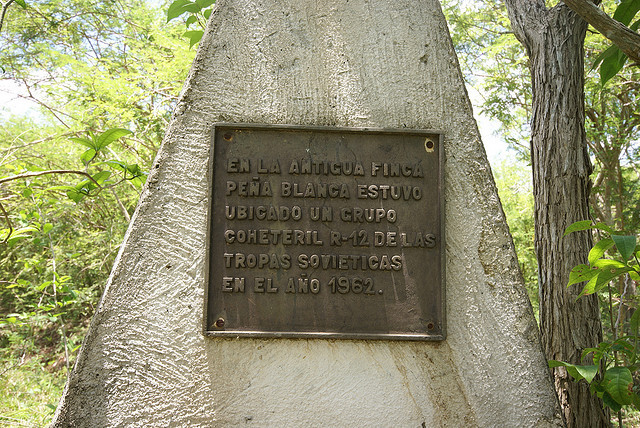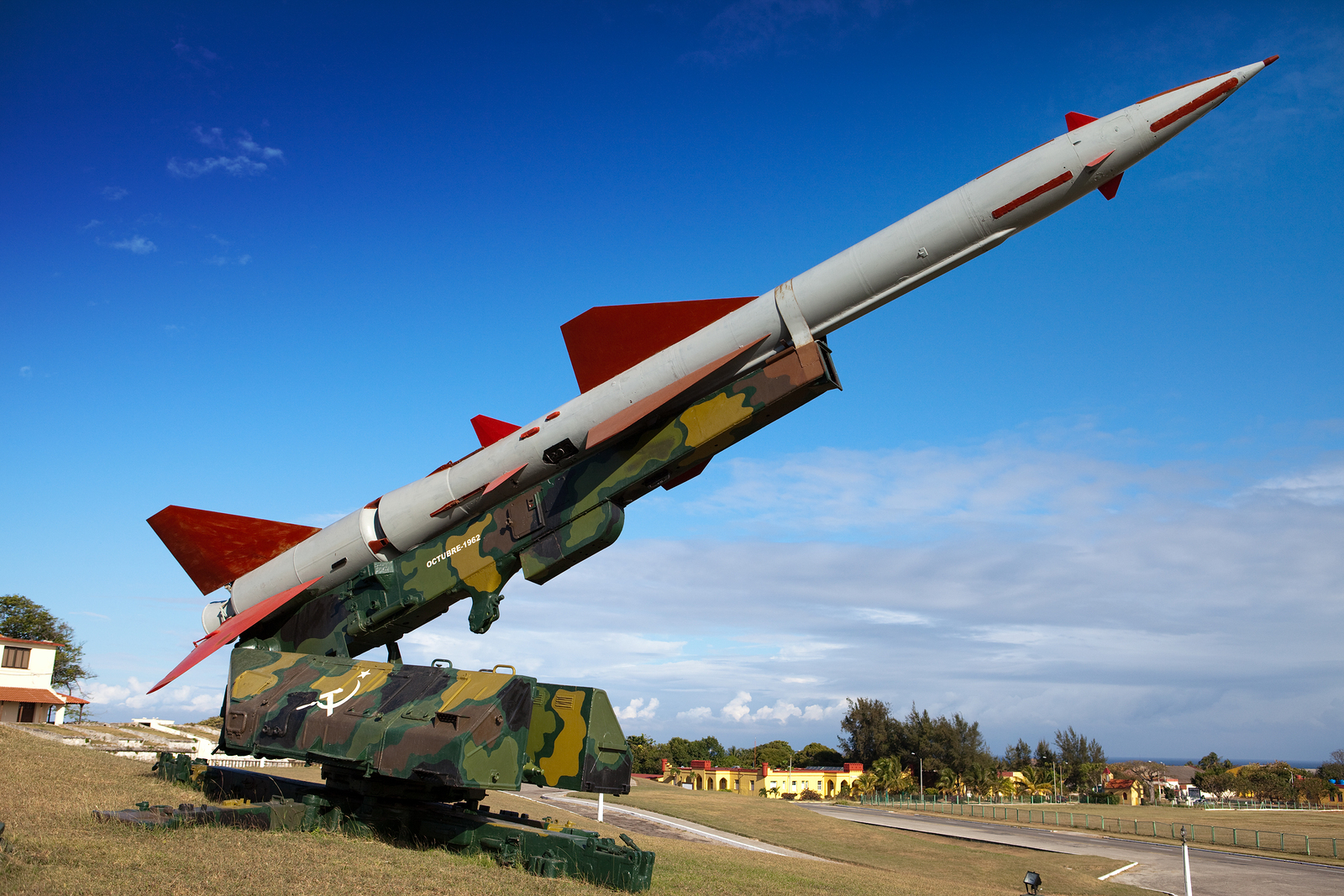In a televised address on October 22, 1962, President John F. Kennedy revealed to the American public that U.S. surveillance aircraft had detected the presence of Soviet missile bases in Cuba, triggering the so-called Cuban missile crisis.
How Did Kennedy Learn of the Cuban Missile Sites?
 This monument at San Cristobal in Cuba marks the site of a medium-range ballistic missile base.
This monument at San Cristobal in Cuba marks the site of a medium-range ballistic missile base.Prior to October 14, 1962, there had been a lull of roughly six weeks during which the United States flew no aerial reconnaissance missions using high-flying U-2 jets over Cuba. Responding to anecdotal reports of missile-like objects being moved along Cuban roads under cover of darkness, such reconnaissance flights resumed on October 14. When the photos taken during that flight were reviewed, CIA analysts detected the presence of what they believed were medium-range ballistic missiles capable of hitting multiple targets in the United States. Early on the morning of October 16, 1962, National Security Adviser McGeorge Bundy showed the aerial photographs to Kennedy, thus marking the beginning of the 13-day Cuban missile crisis.
What Response Did the Joint Chiefs of Staff Recommend?
 This vintage Soviet missile is on display at Fortress Morro-Cabana in Havana.
This vintage Soviet missile is on display at Fortress Morro-Cabana in Havana.In the wake of the missile discovery, Kennedy called together a meeting of the nine members of the National Security Council along with five other key advisers. They mulled a wide array of responses that the United States might take. The options ranged from doing nothing or taking a diplomatic approach on up to an aerial assault on the missile sites coupled with a land-based attack on Cuba. The Joint Chiefs of Staff advocated the most hawkish approach to the dilemma, unanimously recommending a full-scale attack and invasion as the only real solution to the problem.
What Strategy Did JFK Decide to Follow?
Already burned by the disastrous Bay of Pigs invasion in April 1961, Kennedy was extremely wary of following the hawkish recommendations of his top military advisers. He decided to adopt a more measured response to the Cuban missile threat, ordering a naval blockade of Cuba, designed to block and turn back any ship carrying offensive military equipment to the island nation. In his October 22 nationwide address, he announced the blockade and also stated that it would henceforth be U.S. policy "to regard any nuclear missile launched from Cuba against any nation in the Western Hemisphere as an attack by the Soviet Union on the United States. . . ."
How Was the Crisis Finally Resolved?In the immediate wake of Kennedy's announcements, some Soviet ships bound for Cuba appeared to turn around and head back to their home ports. Not so for one Soviet tanker named the Bucharest. Confronted by two U.S. naval vessels on October 25, the tanker continued to steam toward Cuba, and was allowed to do so by naval officers who in the end decided that it was unlikely the tanker contained offensive equipment.
Elsewhere, the situation continued to deteriorate. CIA surveillance indicated that work was continuing on the Cuban missile sites, and on October 27, a U-2 spy plane was shot down over Cuba. Kennedy authorized the U.S. military to prepare for a possible attack on Cuba. In the meantime, Soviet Premier Nikita Khrushchev said his country would remove the missiles from Cuba if the United States would remove its missiles from Turkey and Italy. Just when it seemed that the crisis would end in conflict, the U.S. and Soviet Union struck an accord under which the latter would dismantle its missiles in Cuba in return for a U.S. pledge not to invade the island. Secretly, the United States also pledged to remove its offensive missiles in Turkey and southern Italy, but because this part of the deal remained secret, to the world at large it seemed as if the U.S. had bested the Soviets in striking this accord.
Elsewhere, the situation continued to deteriorate. CIA surveillance indicated that work was continuing on the Cuban missile sites, and on October 27, a U-2 spy plane was shot down over Cuba. Kennedy authorized the U.S. military to prepare for a possible attack on Cuba. In the meantime, Soviet Premier Nikita Khrushchev said his country would remove the missiles from Cuba if the United States would remove its missiles from Turkey and Italy. Just when it seemed that the crisis would end in conflict, the U.S. and Soviet Union struck an accord under which the latter would dismantle its missiles in Cuba in return for a U.S. pledge not to invade the island. Secretly, the United States also pledged to remove its offensive missiles in Turkey and southern Italy, but because this part of the deal remained secret, to the world at large it seemed as if the U.S. had bested the Soviets in striking this accord.
---{-=@
HICKOK



No comments:
Post a Comment